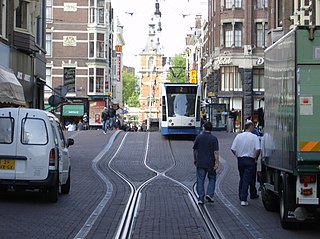
Bicycle-friendly policies and practices help some people feel more comfortable about traveling by bicycle with other traffic. The level of bicycle-friendliness of an environment can be influenced by many factors including town planning and cycling infrastructure decisions. A stigma towards people who ride bicycles and fear of cycling is a social construct that needs to be fully understood when promoting a bicycle friendly culture.

Mikael Colville-Andersen is a Canadian-Danish urban designer and urban mobility expert. He was the CEO of Copenhagenize Design Company, which he founded in 2009 in Copenhagen, and he works with cities and governments around the world in coaching them towards becoming more bicycle-friendly. He is the host of the urbanism documentary television series The Life-Sized City, which premiered in 2017 on TVOntario and in 2018 on various other international channels including Finland's national broadcaster YLE and Italian broadcaster La Effe. Season 1 of The Life-Sized City was nominated for five Canadian Screen Awards in 2018.
A jockstrap, also a jock (male), jill (female), strap, cup, groin guard, pelvic protector (female), supporter, or athletic supporter, is an undergarment for protecting the scrotum and penis or vulva during contact sports or other vigorous physical activity. This article deals chiefly with the genital protective sports gear designed for the male body, colloquially known as a "jock".
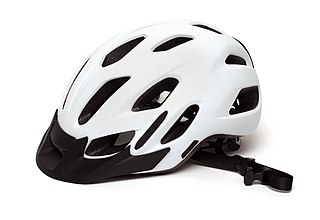
A bicycle helmet is a type of helmet designed to attenuate impacts to the head of a cyclist in collisions while minimizing side effects such as interference with peripheral vision.

Bicycle culture can refer to a mainstream culture that supports the use of bicycles or to a subculture. Although "bike culture" is often used to refer to various forms of associated fashion, it is erroneous to call fashion in and of itself a culture.

Bicycle transportation planning and engineering are the disciplines related to transportation engineering and transportation planning concerning bicycles as a mode of transport and the concomitant study, design and implementation of cycling infrastructure. It includes the study and design of dedicated transport facilities for cyclists as well as mixed-mode environments and how both of these examples can be made to work safely. In jurisdictions such as the United States it is often practiced in conjunction with planning for pedestrians as a part of active transportation planning.
Thrift store chic refers to a style of dressing where clothes are cheap and/or used. Clothes are often bought from thrift stores such as the Salvation Army, Goodwill, or Value Village. Originally popular among the hippies of the late 1960s, this fashion movement resurfaced during the mid-1980s among teenagers, and expanded into the 1990s with the growing popularity of such music and style influences including the grunge band Nirvana. Thrift store chic can be considered as an anti-fashion statement because it does not follow fashion trends and does not attempt to look expensive or new.

Cycling advocacy consists of activities that call for, promote or enable increased adoption and support for cycling and improved safety and convenience for cyclists, usually within urbanized areas or semi-urban regions. Issues of concern typically include policy, administrative and legal changes ; advocating and establishing better cycling infrastructure ; public education regarding the health, transportational and environmental benefits of cycling for both individuals and communities, cycling and motoring skills; and increasing public and political support for bicycling.
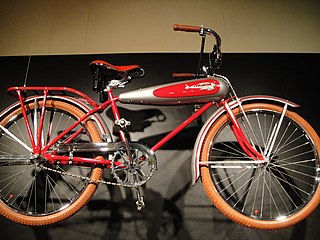
A cruiser bicycle, also known as a beach cruiser or (formerly) motobike, is a bicycle that usually combines balloon tires, an upright seating posture, a single-speed drivetrain, and straightforward steel construction with expressive styling. Cruisers are popular among casual bicyclists and vacationers because they are very stable and easy to ride, but their heavy weight and balloon tires tend to make them rather slow. Another common feature is their ability to be customized with accessories including fenders, lights and saddle bags. They are designed for use primarily on paved roads, low speeds/distances, and are included in the non-racing/non-touring class and heavyweight or middleweight styles of the road bicycle type.

2000s fashion is often described as a global mash up, where trends saw the fusion of vintage styles, global and ethnic clothing, as well as the fashions of numerous music-based subcultures. Hip-hop fashion generally was the most popular among young people of all sexes, followed by the retro inspired indie look later in the decade.

Cycling is a popular mode of transport and leisure activity within London, the capital city of the United Kingdom. Following a national decline in the 1960s of levels of utility cycling, cycling as a mode of everyday transport within London began a slow regrowth in the 1970s. This continued until the beginning of the 21st century, when levels began to increase significantly—during the period from 2000 to 2012, the number of daily journeys made by bicycle in Greater London doubled to 580,000. The growth in cycling can partly be attributed to the launch in 2010 by Transport for London (TfL) of a cycle hire system throughout the city's centre. By 2013, the scheme was attracting a monthly ridership of approximately 500,000, peaking at a million rides in July of that year. Health impact analyses have shown that London would benefit more from increased cycling and cycling infrastructure than other European cities.

Cycling in Sydney, New South Wales, Australia takes place for recreation, commuting and as a sport. Sydney has a hilly topography and so may require a slightly higher level of fitness from cyclists than flatter cities such as Melbourne and Canberra. Sydney depends heavily on motor vehicles where traffic and public transport operate at capacity. This means that cyclist are often competing with motorists for limited space on busier roads, and for limited government resources for expenditure on road infrastructure. In its favour, Sydney has a generally mild climate and there are active cycling groups.

Cycling in Copenhagen is – as with most cycling in Denmark – an important mode of transportation and a dominating feature of the cityscape, often noticed by visitors. The city offers a variety of favourable cycling conditions — dense urban proximities, short distances and flat terrain — along with an extensive and well-designed system of cycle tracks. This has earned it a reputation as one of the most bicycle-friendly cities in the world. Every day 1.2 million kilometres are cycled in Copenhagen, with 62% of all citizens commuting to work, school, or university by bicycle; in fact, almost as many people commute by bicycle in greater Copenhagen as do those cycle to work in the entire United States. Cycling is generally perceived as a healthier, more environmentally friendly, cheaper, and often quicker way to get around town than by using an automobile.
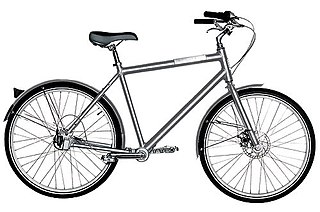
Biomega is a Copenhagen-based, Danish brand of designer bicycles. It is known for engaging international designers from outside the bicycle industry; including Marc Newson, Ross Lovegrove, Karim Rashid and Bjarke Ingels, often giving its products unconventional solutions. In addition to producing bikes under its own name, Falcon produces bicycles under a joined brand with Puma AG.

Copenhagen City Bikes or Bycykler København was the bicycle sharing system of Copenhagen, Denmark. Launched in 1995 with 1,000 cycles, the project was the world's first organized large-scale urban bike-sharing scheme, which, unlike its Dutch predecessor, featured what are now considered basic elements such as coin deposit, fixed stands and specially designed bikes with parts that cannot be used on other bikes. Riders paid a refundable deposit at one of 110 special bike stands and had unlimited use of a bike within the specified downtown area. The scheme was funded by commercial sponsors. In return, the bikes carried advertisements, which appeared on the bike frame and the solid-disk type wheels. When the programme was abolished in October 2012, some 1,500–1,700 bikes were still in service, out of a total of 2,500 put onto the streets.

Cycling in Denmark is both a common and popular recreational and utilitarian activity. Bicycling infrastructure is a dominant feature of both city and countryside infrastructure with segregated dedicated bicycle paths and lanes in many places and the network of 11 Danish National Cycle Routes extends more than 12,000 kilometres (7,500 mi) nationwide. Often bicycling and bicycle culture in Denmark is compared to the Netherlands as a bicycle-nation.

Brooklyn Bicycle Company, is a bicycle company based in Williamsburg, Brooklyn, New York, that was founded by Ryan Zagata in 2011, as Brooklyn Cruiser.

Monton Sports is a Chinese sports equipment manufacturing company headquartered in Guangdong. The company, focused on road bicycle racing products, has additional offices in Taichung, Madrid, Pahang, North Carolina, Bangkok, and Slovakia.
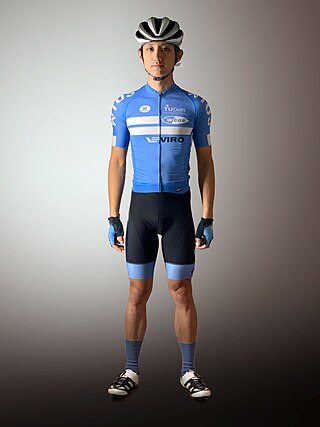
In competitive cycling, the kit is the standard equipment and attire worn specifically by athletes participating in the sport. The outfits differ from the clothes worn in other forms of cycling, such as commuting and recreational cycling. Competitive kit uses technical and performance materials and features to improve efficiency and comfort. The UCI specify the kit and the design the riders use.



















